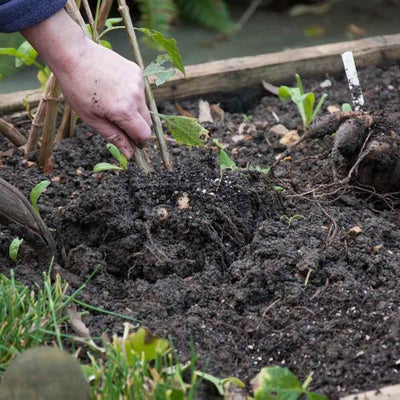
Quick facts
Suitable for - Tender and borderline hardy herbaceous perennials
Timing - At the first sign of frost
Difficulty - Easy
Suitable for...
Tender herbaceous that can be lifted and stored include dahlias, cannas, tuberous begonias and gladioli. All these plants have fleshy tubers, (underground stems) or corms that can survive in a state when lifted and stored.
In milder areas of the UK and in sheltered, well-drained, parts of the garden, it may be possible to cut back the tops of tender plants, leave them in the ground and cover them with a thick to protect them over winter. In very cold or exposed areas, even hardy perennials may need the protection of mulch over winter.
Video tips for preparing your garden for the winter months
When to protect tender plants
Tender plants need protection at the first warning of frost, usually between September and November.
Specific cultivation practices are also used to protect plants from winter damage, and these are started from mid-summer onwards. See our advice on preventing winter damage for further detail.
How to protect tender plants
Cannas, dahlias and pelargoniums (commonly known as geraniums) can be lifted and stored in a semi- state over winter. Where lifting and storing are not necessary, then thick, dry over the crown of non-woody plants may be all that is needed for winter protection.
See our advice on pelargoniums for information on overwintering these popular garden plants.
Lifting plants
Cannasare lifted after the foliage has been blackened by frost:
- Cut back the stems 5cm (2in) from the base. These stems can be composted
- Use a fork to prise the plants out of the soil, taking care not to damage the roots or fleshy
- Remove debris and loose soil
- Store them in trays of sand, coir or vermiculite, with the crown of the plant (where the stems join the roots) just showing
- Keep them just moist in a cold, frost-free greenhouse or conservatory
- Container-grown plants can be stored in their pots after cutting back
Dahlias are also lifted once the foliage has been blackened by the first frost:
- Cut off the old flowering stems 5cm (2in) from the base and trim away any thin roots. These stems can be composted
- Use a fork to prise the plants out of the soil, taking care not to damage, cut or bruise the tubers, as this can lead to rots developing in storage
- Remove the soil from the tubers by hand. Position them upside down in a cool place for a few weeks to dry off
- Label cultivars and bury in trays or wooden boxes filled with dry sand, soil or , leaving only the old flower stalks exposed
- Place the trays in a cool but place, such as a garage attached to a house or a shed
Begonia tubers are lifted and stored in the same way as dahlias. Gladiolus corms can be lifted and stored like . See our bulbs page for further information on lifting and storing bulbs.
Protecting plants with mulch
Where lifting and storing are not necessary, a thick, dry mulch can be used for protection. In mild areas, cannas and dahlias can be overwintered like this, as can Agapanthus (those that lose their leaves in winter) and globe artichokes. The young shoots of lilies can be mulched to protect them from late spring frosts. The tender shrub Melianthus major can be cut back to ground level and then mulched for winter protection.
Suitable materials include straw, garden compost, chipped or well-rotted manure. See our advice on mulches and mulching for further ideas.
Tender plants that can not be lifted and stored
These need to be wrapped and protected in situ. See our advice on overwintering tender plants under wraps for further information.

Problems
Rots can develop in stored tubers, corms and . Keeping them dry and well ventilated is important.
Plants protected under may come into growth and flower a little later than those lifted, stored and replanted in spring.





